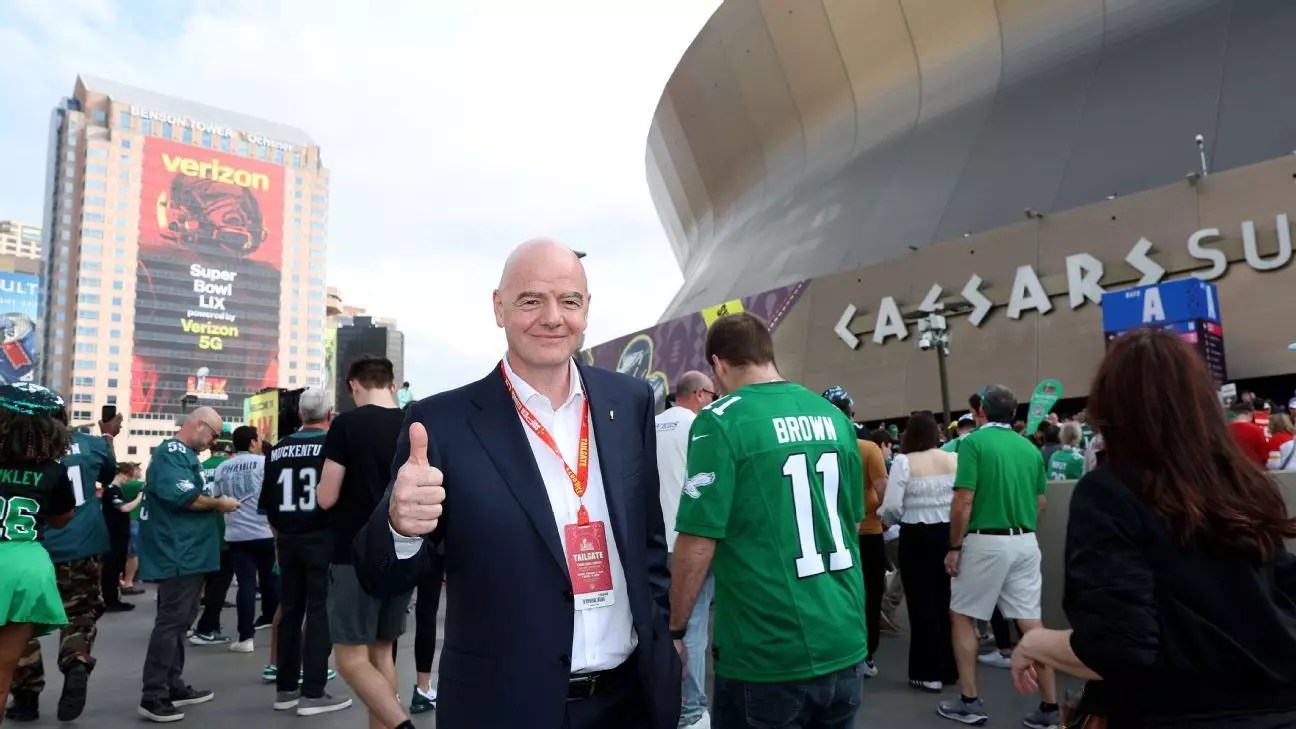The world of sports is continuously evolving, and the blending of entertainment with athletic competitions has become not only common but arguably necessary. With the upcoming FIFA World Cup in 2026 being hosted in the United States, expectations are high that the event will mirror the grandeur of the Super Bowl, complete with a star-studded halftime show intended to capture the attention of a diverse audience. While some purists lament this commercialization, insisting that it detracts from the essence of the game, I assert that these performances can coexist with the sport without diluting its core values.
Why such resistance, though? Often, criticism stems from a nostalgia for the “good old days,” a period many view as simpler and purer. This desire to preserve the past prevents individuals from recognizing that evolution is part of every successful entity. The NFL has transformed its face, not only adopting elaborate halftime shows but also redefining what it means to enjoy football. Similarly, the world of FIFA is heading toward a point where entertainment can enhance the spirit of competition rather than jeopardize it.
Striking a Balance: The 15-Minute Rule
In this context, one of the most critical considerations remains the timeframe of halftime performances. The suggested inclusion of a rock band or a pop star must strictly adhere to the sacred tradition of a 15-minute intermission. Failure to maintain this limit risks upsetting the dynamism of the game, and recent examples underscore this reality. Just last summer, the Copa America final faced significant backlash after halftime extended to 25 minutes, leading to player discomfort and disarray. Adhering to established timeframes is not merely a matter of tradition; it’s essential for player performance and readiness to compete.
Each sport comes with its unique rhythm and set of rules, and football’s ethos is built on continuity and endurance. Disruption in the momentum, particularly during critical matches, could have widespread repercussions on players’ performance. Maintaining a sharp focus on these details is vital for FIFA, and they are compelled to respect the athlete’s need for conditioning and preparation during what is meant to be a brief reprieve.
Turning Doubts into Opportunities
Arguments can be made that halftime shows will draw a larger audience, weaving an intricate tapestry of sport and spectacle. While skeptics question their relevance to avid football fans, they ignore the potential reach that superstars bring to the sport. Engaging a broader audience could create fresh entry points into the world of football, possibly converting casual listeners into die-hard fans. That said, questions linger about whether these performances genuinely foster connection to the game or merely serve as commercial hype.
One can’t help but wonder: does FIFA benefit from this massive revenue generation? Indeed, all of sports relies on growth and profitability to sustain itself. Yet, while FIFA can justify its actions with sufficient backing, it must also align corporate interests with the spirit of the sport. Greater financial resources could lead to enhanced development programs worldwide, and as a result, lesser-known football marketplaces could grow and flourish. Football should be a unifying force, bridging divides rather than allowing greed to overshadow that potential.
Adapting with Integrity: The Case for Authentic Change
When assessing the future of halftime performances, it is crucial to consider the integrity of football as a sport. The line FIFA mustn’t cross is clear: while they can innovate and embellish the viewer experience, they should be cautious not to disrupt the essence of the game itself. Introducing entertainment is welcome, but it must be done artfully, with respect for player safety and athletic integrity in mind.
In a world where change is the only constant, football has an opportunity to adapt and elevate its platform. If executed wisely, halftime performances could serve as more than just fleeting moments of entertainment; they could become dynamic intersections of culture, artistry, and sport, fostering deeper connections to the game. Moreover, if FIFA can respect the column of 15-minute structure, adhering to both player needs and audience desires, football could emerge more unified, spirited, and engaging than ever before.
Amid all these transformations, one thing is certain: football’s greatest strength lies in its fervent communities and the passion it ignites. While the landscape may shift and evolve, the bond between football and its fans remains unwavering, leaving room for joy, celebration, and togetherness on every pitch around the globe.


Leave a Reply